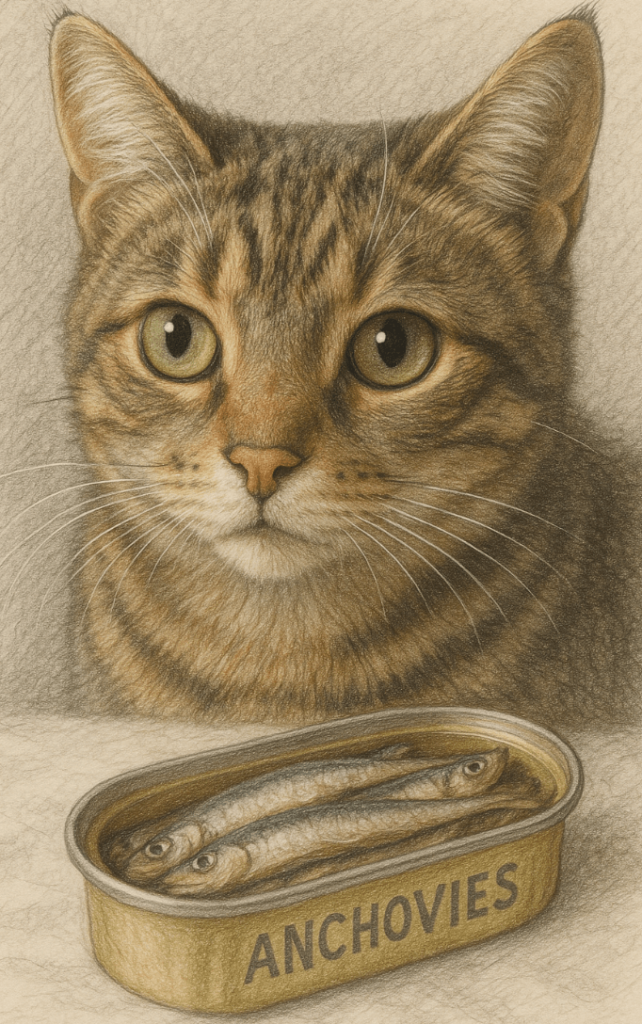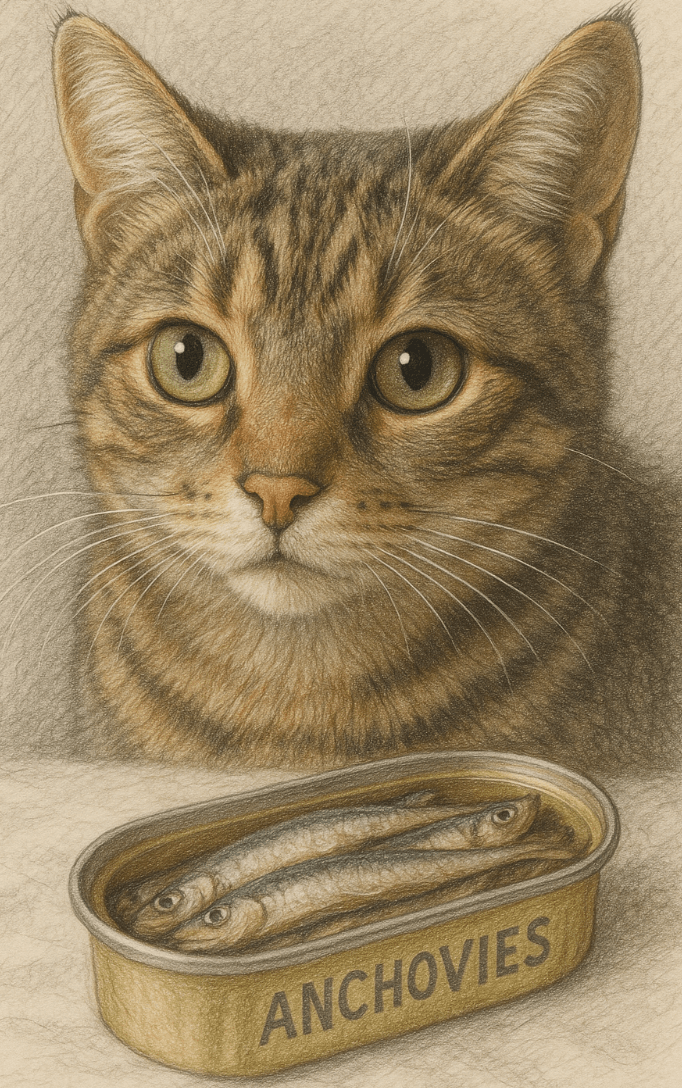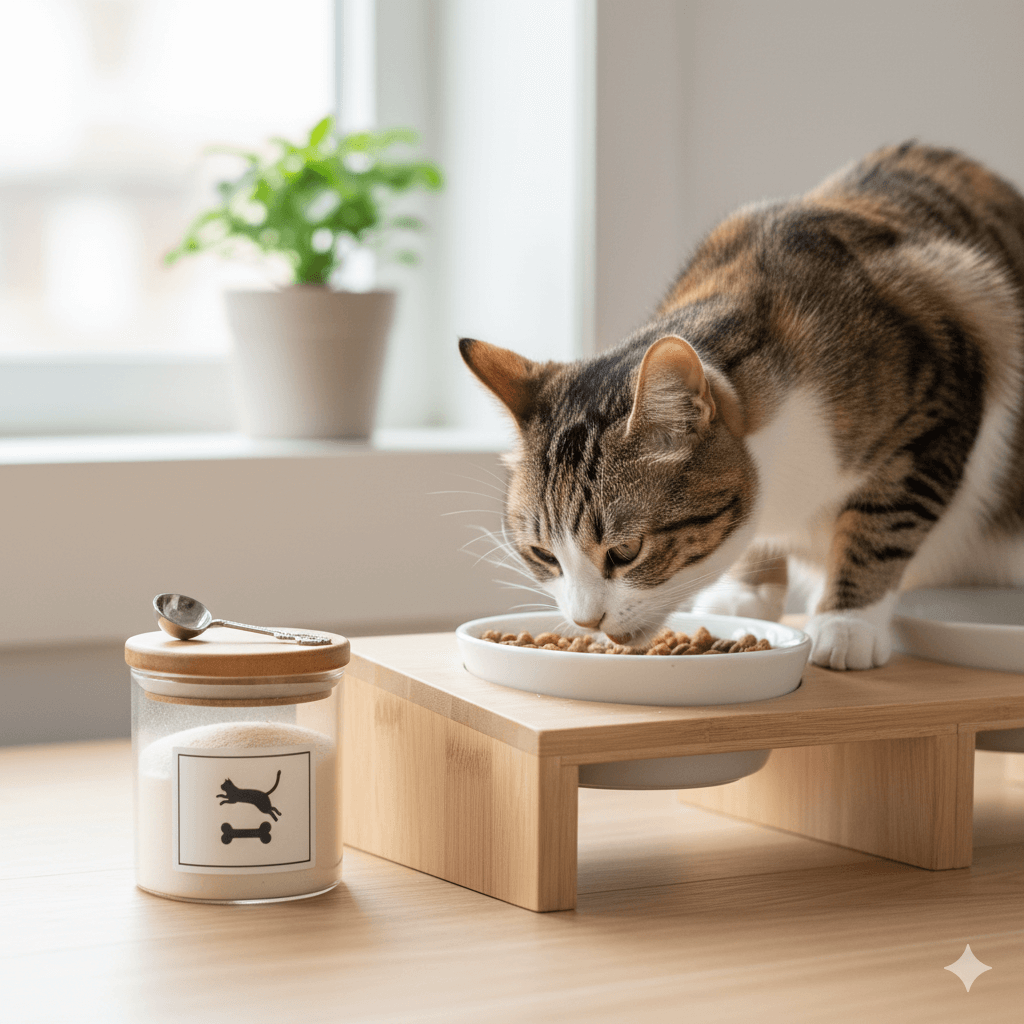Can Cats Eat Anchovies?
Cats are naturally curious creatures, and their interest in human food often leads pet owners to wonder what’s safe for them to eat. One question that frequently arises is whether cats can eat anchovies. These small, oily fish are packed with nutrients, but are they a healthy treat for your feline friend? While anchovies can offer some benefits, there are important considerations to keep in mind to ensure your cat stays happy and healthy. In this blog post, we’ll explore the potential advantages and risks of feeding anchovies to cats, along with tips for incorporating them into your cat’s diet safely.
Benefits of Feeding Anchovies to Cats
Anchovies are not only delicious but also rich in nutrients that can support your cat’s overall health. When given in moderation, they can be a nutritious addition to your cat’s diet.
High-Quality Protein:
Anchovies are an excellent source of lean protein, which is essential for muscle development and energy in cats.Rich in Omega-3 Fatty Acids:
Omega-3s promote a healthy coat, reduce inflammation, and support brain and heart health in felines.Low in Mercury Compared to Larger Fish:
As small fish, anchovies contain lower levels of mercury, making them a safer seafood option for cats.Natural Source of Taurine:
Taurine is critical for feline health, supporting vision, heart function, and immune system strength. Anchovies provide this nutrient naturally.Hydration Boost:
Fresh or water-packed anchovies can contribute to your cat’s daily fluid intake, helping prevent dehydration.
While anchovies offer these benefits, it’s important to feed them in moderation to avoid potential downsides.
Potential Risks of Feeding Anchovies to Cats
Although anchovies can be a healthy treat, there are risks associated with feeding them to your cat. Being aware of these concerns ensures you make informed decisions about their diet.
Salt Content in Processed Anchovies:
Many canned or jarred anchovies are high in salt, which can lead to dehydration or sodium toxicity in cats.Risk of Allergic Reactions:
Some cats may have sensitivities or allergies to fish, resulting in digestive upset or skin issues.Overfeeding Can Cause Obesity:
Despite their small size, anchovies are calorie-dense. Overfeeding can contribute to weight gain over time.Bones as a Potential Hazard:
Tiny bones in anchovies could pose a choking risk if not properly prepared or monitored.Dependency on Human Food:
Feeding too many treats like anchovies may discourage your cat from eating their balanced commercial diet.
By understanding these risks, you can take steps to minimize harm while still offering your cat a tasty snack.
Check this guide 👉Can Cats Eat Pineapple Leaves? Best 7 Expert Tips!
Check this guide 👉Can Cats Eat Tulips? Best 7 Expert Tips!
Check this guide 👉Can Cats Eat Thyme? Best 7 Expert Tips!

Safe Ways to Feed Anchovies to Cats | Risks to Avoid When Feeding Anchovies |
|---|---|
Choose plain, unsalted anchovies | Avoid anchovies packed in oil or heavy sauces |
Offer small amounts as an occasional treat | Never give large portions at once |
Check for tiny bones before serving | Don’t feed processed anchovies with added preservatives |
Mix finely chopped anchovies with regular food | Avoid daily feeding to prevent dietary imbalance |
Use fresh or water-packed options | Steer clear of flavored varieties |
How to Safely Introduce Anchovies to Your Cat
Introducing new foods to your cat’s diet requires care and observation. Follow these guidelines to ensure anchovies are a safe and enjoyable treat for your furry companion.
Start with Small Portions:
Begin by offering a tiny piece of anchovy to see how your cat reacts before giving larger amounts.Choose Plain Varieties Only:
Opt for fresh or water-packed anchovies without added salt, oil, or spices.Remove Bones Carefully:
Inspect the anchovies for any remaining bones and remove them to prevent choking hazards.Monitor for Adverse Reactions:
Watch for signs of digestive upset, such as vomiting or diarrhea, after introducing anchovies.Limit Frequency:
Treat anchovies as an occasional snack rather than a staple food to maintain dietary balance.
With these precautions, you can safely incorporate anchovies into your cat’s diet.
Signs Your Cat May Not Tolerate Anchovies
While most cats enjoy anchovies, some may experience adverse reactions. Recognizing these signs early allows you to address any issues promptly.
Vomiting or Diarrhea:
Digestive upset is a common sign that your cat’s stomach doesn’t agree with anchovies.Excessive Itching or Skin Irritation:
Allergic reactions may manifest as itching, redness, or rashes on your cat’s skin.Loss of Appetite:
If your cat refuses to eat after trying anchovies, it could indicate discomfort or illness.Swelling Around the Mouth or Face:
Swelling is a serious symptom of an allergic reaction and requires immediate veterinary attention.Lethargy or Unusual Behavior:
A sudden lack of energy or strange behavior might signal that something isn’t right.
If you notice any of these symptoms, discontinue feeding anchovies and consult your veterinarian.
Alternatives to Anchovies for Nutritional Variety
If anchovies aren’t suitable for your cat or you’d like to explore other options, there are plenty of alternatives that provide similar nutritional benefits.
Cooked Salmon (Plain):
Rich in omega-3 fatty acids, salmon supports skin and coat health but should be served sparingly.Tuna (Water-Packed):
Occasional servings of tuna can be a favorite treat, though it shouldn’t replace a balanced diet.Sardines (Unsalted):
Like anchovies, sardines are nutrient-dense and low in mercury, making them a great alternative.Chicken or Turkey (Boiled):
Lean meats are an excellent source of protein and can be offered as a healthy snack.Commercial Cat Treats:
Specially formulated treats ensure your cat gets nutrients without risking dietary imbalances.
These alternatives allow you to diversify your cat’s diet safely.
Tips for Transitioning to New Foods
Introducing new foods like anchovies requires a gradual approach to avoid upsetting your cat’s digestive system. Here are some tips for a smooth transition.
Introduce Gradually:
Start with tiny amounts mixed into their regular food to let their system adjust slowly.Observe Eating Habits:
Pay attention to how your cat responds to the new food—enthusiasm or reluctance can guide future offerings.Stick to Familiar Preparation Methods:
Avoid adding oils, spices, or seasonings that could irritate your cat’s stomach.Maintain Dietary Balance:
Ensure treats don’t exceed 10% of your cat’s daily caloric intake to preserve nutritional balance.Consult Your Vet First:
If you’re unsure about introducing a new food, seek professional advice to confirm its safety.
A thoughtful approach ensures a seamless integration of new foods into your cat’s routine.
Understanding Your Cat’s Natural Diet Preferences
Cats are obligate carnivores, meaning their bodies thrive on animal-based proteins. Understanding their natural preferences helps explain why certain foods appeal to them.
Craving Protein-Rich Foods:
Cats instinctively seek out high-protein sources like meat and fish, which align with their evolutionary diet.Attraction to Strong Smells:
The strong aroma of fish like anchovies triggers their interest, as smell plays a key role in their appetite.Preference for Soft Textures:
Cats often prefer softer textures, which mimic the prey they would naturally consume in the wild.Limited Interest in Carbs:
Unlike humans, cats derive little energy from carbohydrates, focusing instead on fats and proteins.Curiosity About Human Food:
Their curiosity drives them to investigate what their owners eat, including items like anchovies.
Understanding these instincts helps you better cater to your cat’s dietary needs and preferences.
Frequently Asked Questions About Cats and Anchovies
Are anchovies safe for kittens?
Yes, but in very small amounts and only if they’re plain and bone-free. Kittens have sensitive digestive systems, so proceed with caution.
Can I feed my cat canned anchovies?
Only if they’re packed in water and free of added salt or preservatives. Avoid oil-packed or seasoned varieties.
How often can I give my cat anchovies?
Once or twice a week as a treat is sufficient; avoid making them a daily part of your cat’s diet.
What should I do if my cat eats too many anchovies?
Monitor for symptoms of digestive upset or dehydration. Contact your vet if you notice anything unusual.
Do anchovies replace taurine supplements?
While anchovies contain taurine, they shouldn’t replace a balanced diet or prescribed supplements unless advised by your vet.
Balancing Treats and Nutrition for Your Cat
Feeding anchovies to your cat can be a delightful way to add variety and nutrition to their diet, provided you do so responsibly. By choosing plain, bone-free options and limiting portion sizes, you can minimize risks while maximizing benefits. Always prioritize your cat’s overall dietary needs and consult your veterinarian if you’re unsure about introducing new foods. With proper care and attention, you can treat your feline friend to the occasional anchovy snack without compromising their health or happiness.
Understanding Bone Supplement for Cats: Best 7 Expert Tips! – Safe, vet-approved guidance for strong feline bones & balanced nutrition.
Bone Supplement for Dogs: Best 7 Expert Tips! – Expert guide to calcium, collagen & bone health for every life stage.
Understanding Can Cats Get Sunburn: Best 7 Expert Tips! – Protect your feline from UV damage with vet-backed prevention strategies.
How to Train a Seizure Alert Dog: Best 7 Expert Tips! – Learn expert-backed steps to nurture natural instincts into reliable, life-saving seizure alerts.





